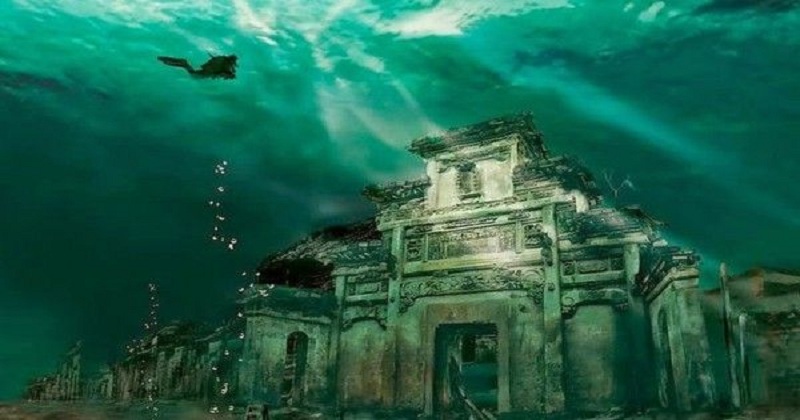
Here are 10 lost underwater cities of the ancient world that were once lost in time but has been discovered and are being explored.
1.Aegean Sea Ruins
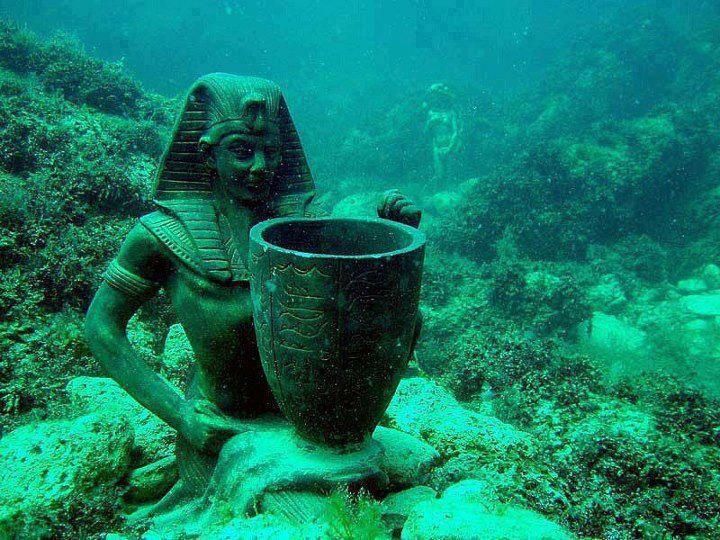
As one of the world’s oldest civilization, Greece certainly has its fair share of historical sites. But Aegean Sea Ruins, present one of the noteworthy discovery in the recent Greek history. Found off the small island of Delos in 2014. What first appeared to be the remains of a port later discovered to be a pottery workshop. Kiln, terracotta pots, a retaining wall and also other unidentified buildings covering nearly 12 acres of the seabed are also found in the seabed. The failed coastal settlement believed to succumb to the ocean bed some 4500 years ago. Researcher suspects, it may be the ancient lost city of Kane. The city where Athenians defeated the Spartans. If 300 were to happen now it will be pretty underwater ‘literally‘.
2. Cuban City Ruins
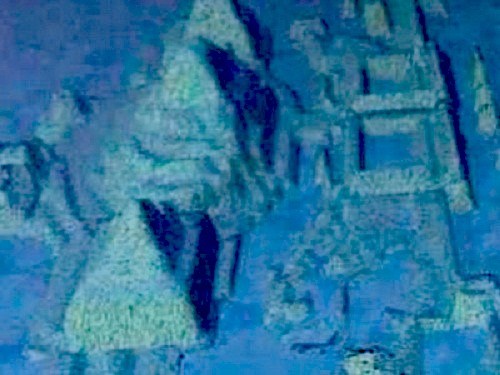
The discovery of an ancient underwater lost city is always a cause for excitement. But when that city sits beneath one of the most mysterious geographical location on earth. ” The Bermuda Triangle”. Your thoughts were bound to run wild. In 2001 SONAR scans off the coast of Cuba revealed a series of distinctly geometric structures. Considering the structure to sit at a depth of 2000 – 2600 feet, it is hard to fathom as to how and when these structures would have been constructed. Some experts have gone so far as to say that they can identify pyramid and Sphinx. Other theorists have called it the lost city of Atlantis. Curiously, there has been a distinct lack of a follow-up research. Which propelled the many conspiracy theorists yelling cover up. The creators of X-Files and Ancient Aliens must be drooling to make a new series out of it.
3. Yonaguni Ruins
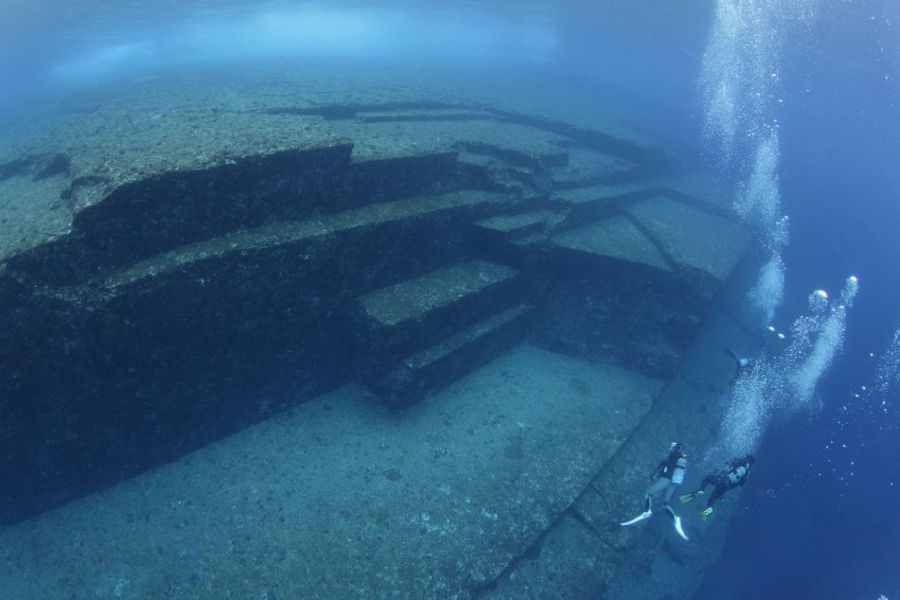
Yonaguni Ruins also known as Atlantis of Japan. 2000 years ago, a city sank into the ocean off the coast of Yonaguni. Due to massive seismic activity or so, the story goes. As is the case with many underwater monuments, many researchers dismiss the Yonaguni Monuments and its surrounding structures as a rock formation naturally occurring shaped by erosion. However, the structures are very distinct at sharp angles, animal-like shapes, and apparent columns. Leading many to side with ancient civilization argument. The most difficult structure to defend to be naturally formed is a stepped pyramid. It stands at 25 meters in height. According to the local marine geologist Masaaki Kimura, this may be Mu. One of several lost continents theorized throughout the ages.
4. Lost City of Alexandria
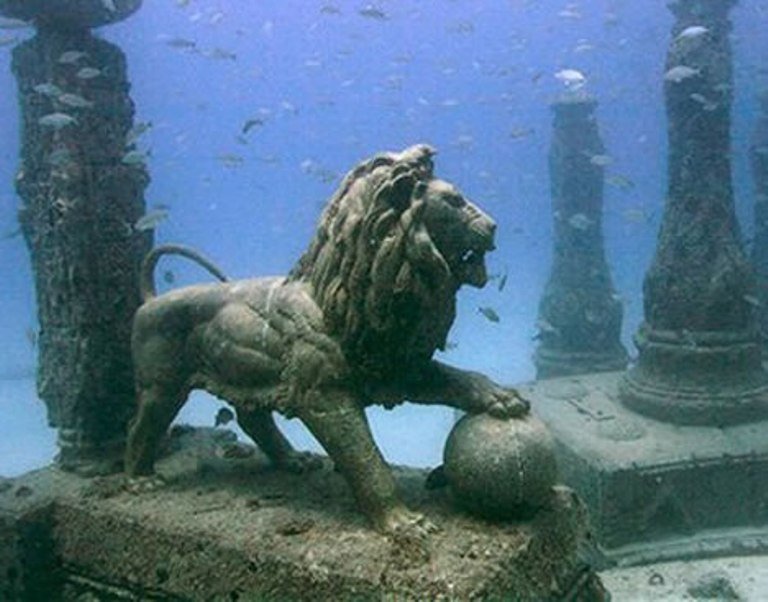
verything related to the history of Egypt is always a big deal for historians. But when you find an ancient city, the last pharaoh Cleopatra ruled, things are bound to fly off the handle. The ancient city of Alexandria was almost perfectly preserved under the sea. The city disappeared due to a series of natural disaster including tsunamis and earthquakes. Hidden for almost 1600 years, it is rediscovered in 1988.
Scientists are now recovering astonishing artifacts. Rediscovering the architectural beauty and economic power of a city which was 2nd only to Rome. What may be the world’s oldest surviving university complex has also come to light. The most fabled discovery of them all is the Lighthouse of Alexandria which guided ships into the great harbor for nearly more than 2000 years. The ghost from the past has been brought to light and what used to be a vague legend of Alexandria are now in front of everyone.
5. Pavlopetri, Greece
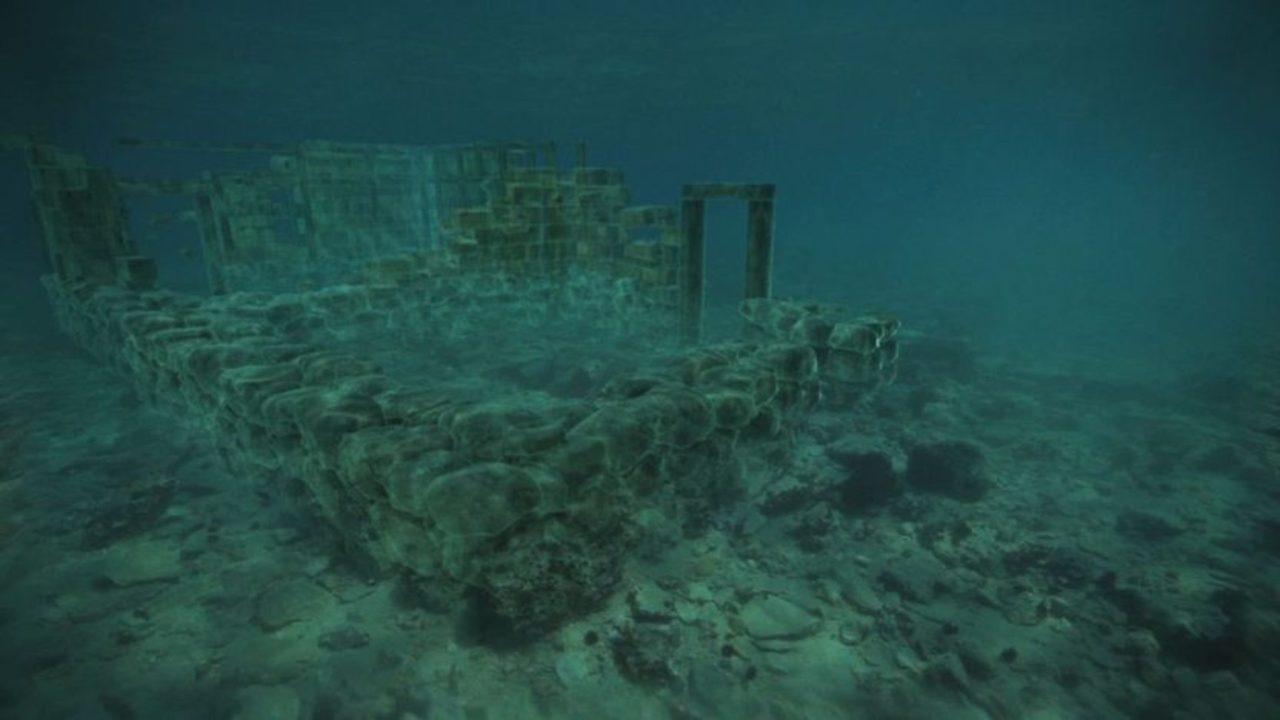
Pavlopetri is the modern name given to the city whose original name is lost in time. Many researchers claim it to be the oldest submerged city in the world. It sank under the water off the southern tip of Greece around 5000 years ago. Nicholas Flemming discovered the city in 1967 and was mapped one year after this. The city is incredibly well designed with road, houses, gardens, temples, cemetery, and a complex water management system. Historians think an earthquake might have destroyed Pavlopetri. The same that destroyed the Minoan civilization on Crete around 1000 BC
6. Ruins of Lake Titicaca
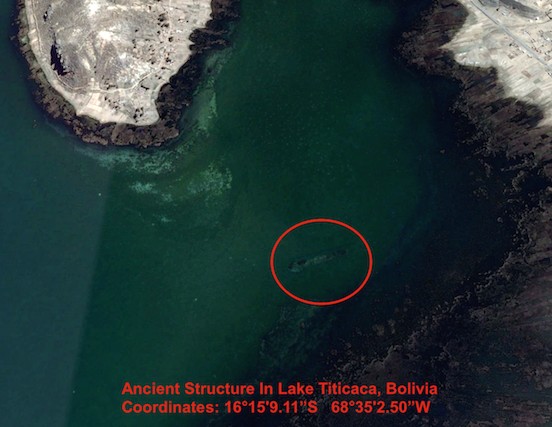
Lake Titicaca is located in the Andes between Bolivia and Peru. It is the largest freshwater lake in South America. It is known as the cradle of Peru’s ancient civilizations including the Purakas, the Tiwanakus, and the Incas. They have left behind ruins including, a mysterious underwater temple thought to be 1000 – 1500 years old ensuring the tribe’s presence.
In the Incan creation myth, the god Con Tiqui Viracocha emerged from the lake. After commanding the sun, moon, and stars to rise. Viracocha created human beings from stone and commanded them to go populate the world. Incas, therefore, believed lake Titicaca is their place of origin and their spirits arrive at the lake when they die. A team archaeologist discovered a huge temple in 2000 which measures 656 feet by 164 feet, almost twice the size of a normal football pitch. Reports claim that more than 200 dives have been made to film the ruins. In doing so they also discovered a long road, a terrace for crops, and an 800-meter long wall under the Lake.
Also Read : Dubai Police recover $20 million diamond stolen from UAE-based company : Watch Video
7. Lost City of Thonis-Heracleion
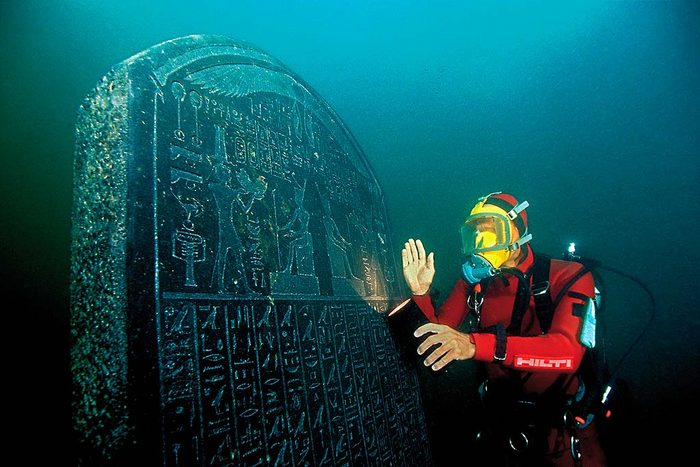
Thonis-Heracleion which was nothing more than just a legend from ancient historical texts. Named by Greeks as Heracleion and Thonis by Egyptian. It is one of the places Helen visited with her lover Paris. Frank Godibo and his team in co-operation with Egyptian supreme council of antiquities. Adopted a unique survey-based approach which utilizes the most sophisticated technical equipment. Due to this, they were able to locate, map and excavate parts of the city. Artifacts which brought to the surface show that the city once was massive trade center and bustling port city. So far, archaeologists have stumbled on 60 ancient shipwrecks in the immediate area, along with hundreds of anchors and coins from across the sea. Giant stone tablets inscribed in ancient Greek and Egyptian, and more than 15-foot long sculpture that once adorned the city’s temple were later found.
8. Atlit Yam, Israel
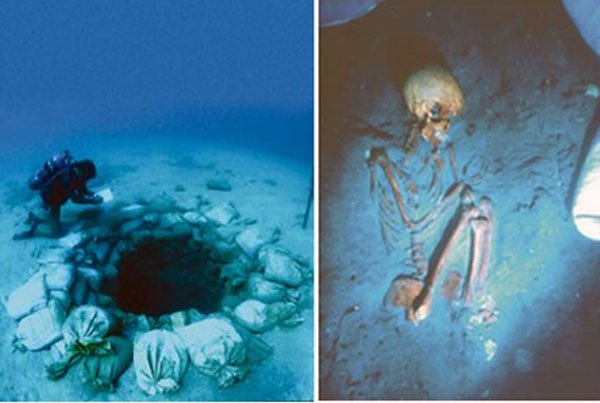
Atlit Yam is a Neolithic village located in the Mediterranean Sea, near Haifa in Israel. That existed between the years 6900-6300 BC. Many experts claim that a tsunami causes the city to submerge underwater. The marine archaeologists Ehud Galili discovered the city in 1984. Since then, a series of excavation led by the marine experts have unearthed numerous houses along burial sites and structures that may have been used as a table. The biggest discovery that spawned from this finding was the skeleton in addition to this, archaeologists have uncovered a total of 65 sets of human remains. With this finding, experts were able to see the earliest known cases of Tuberculosis. A great insight into what the human structure was like thousands of years ago.
9. Shicheng, China
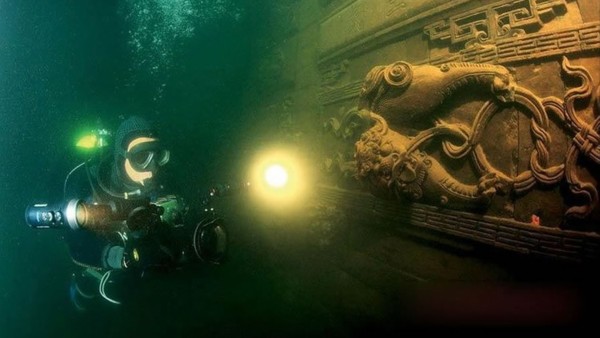
10. Lost City of Lord Krishna, India
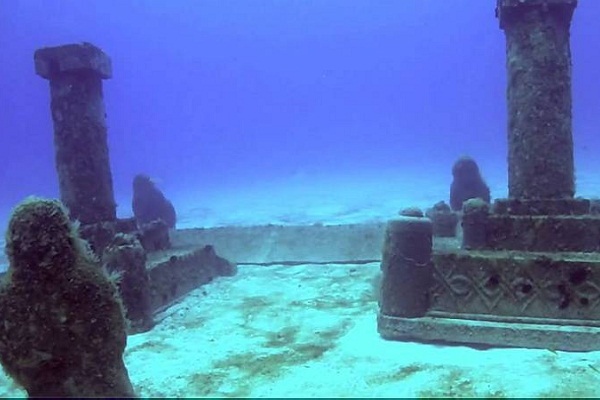
So far on this list, you have seen cities, architecture, and sculpture of great historical importance. Some even proving old legends but nothing could match up to the essence of remains of the lost city off the coast of Gulf of Cambay, India that could change the history we know today. It was discovered in 2001 during a routing pollution survey. India’s National Institute of Ocean Technology (NIOT) using sonar equipment identified huge geometrical structures 120 feet below the surface.
Debris recovered from the sites including construction material, pottery, sections of wall and human bones dated back to more than 9,500 years old. The city belongs to the time when mainstream archeology tells us there were no cities anywhere in the world rather, just small. Some of the artifacts that were retrieved dated 32,000 years back. Experts concluded that the area might have been submerged in the water somewhere around 9,000 years ago at the end of last ice age when ice caps melted. Therefore, the city apparently existed from 32,000 to 9,000 years ago. Divers also discovered cobblestone street, sandstone wall, and evidence of a prosperous seaport. Scholars declared these ruins to be the remains of the Ancient and Legendary City of Dwarika.
The first big city on record appeared in Mesopotamia around 4,500 years old. Prior to that everything consisted of small village settlements. Author and filmmaker Grahm Hancock who specializes in uncovering of ancient civilizations say that the nothing else on the scale of the underwater cities of Cambay is known creating massive repercussions for our view of the ancient world. He further added huge chronological problem with this discovery. “It means that the whole model of the origins of civilization with which the archaeologists are working, will have to be remade from scratch,” he said.

Post Your Comments